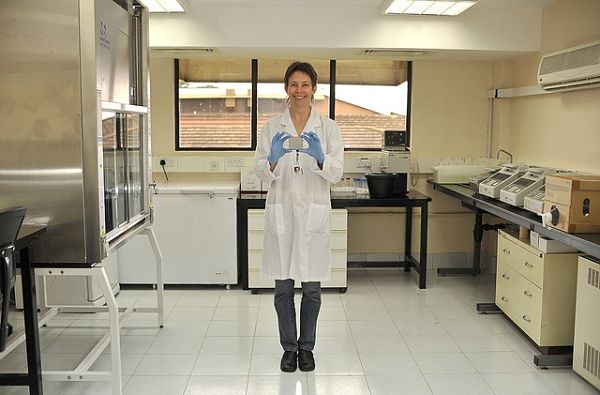It happens to the best of us. You’re minding your own business and suddenly out of nowhere your mastermix is a bubble bath and your primers are enjoying a froth party. Let’s talk about how to deal with these foamy fiends!
When you’re making up your mastermix, you could have a variety of ingredients going in there but it’s probably something along the lines of: Taq enzyme (or similar), primers, pure water, salts, magnesium, and dNTPs.
So what is making the bubbles?
The enzyme.
The sneaky party-craving enzyme will throw a bubble party if given any kind of encouragement, especially in the form of hasty pipetting. Let’s talk about how to stop your enzyme from inviting your solution to Jacuzzi parties.
How to avoid bubbles
The best tip of all: add the enzyme slowly. Aspirate the enzyme using a sterile tip. Insert the tip into your mastermix vessel by holding the vessel at a diagonal angle toward the tip (don’t spill your mastermix!) Slowly dispense the enzyme down the side of the vessel.
Second best tip: add the enzyme last. There are many advantages to this. You minimize the time the enzyme is out of the freezer; if you make any mistakes with the ingredients, at least you’ve not added the expensive enzyme yet; and most importantly for us here, you are far less likely to induce bubbles.
Read on to find out why!
Getting mixed up: sometimes when mixing together your mastermix, you may find bubbles or foam are made. You can avoid or at least minimize this with one major step! Never mix your mastermix by taking a pipette, turning up the dial to higher than your volume and pipetting up and down. You’ll be left with nothing more than a PCR cloud.
When mixing, the foolproof way is to cap and invert your tube, very gently, with all the love and tenderness you’d show a cute newborn kitten. Turn the container over and over a few times. If you do it right, you might even feel it purr.The disadvantage to this is that if you’re working with a small volume, you may lose some of it in the vessel’s cap/lid so I would recommend you pipetting any fluid that gets stuck back into the solution (slowly!) You can also try very gently pipetting with the dial turned low, running the mix down the side but you may still get a bit of foam. The same can be said for vortexing. Personally, I do a lot of PCRs and so I like to use a vortex turned down low but some people fret that this damages your enzyme (my enzyme hasn’t complained yet!)
To each his own. See what works for you. You can also try very gently pipetting with the dial turned low, running the mix down the side but you may still get a bit of foam. The same can be said for vortexing.
Salvaging bubbly solutions
If the damage is already done, you can try a few things to at least reduce it;
– First step is to use a pipette to remove some of the big bubbles. Stab at a bubble with the pipette engaged and aspirate up the air inside the bubble.
– Next step is to remove some of the foam. If you have a table mini-centrifuge, let the solution spin for a couple of seconds. Alternatively, you can try vortexing the mix on low-medium intensity. This breaks down the bubbles but may leave a foam. Vortexing too intensely can make your enzyme throw a hissy fit so take care when using this method.
– Foam can be removed by aspirating it out but I would recommend just dishing out the mix into your pipette tubes and only worry about the foam if you run out of mastermix.
– PCR-ing pro tip! Make extra mastermix. Usually the rule is for every 9 samples add 1 when working out your mastermix but you can add 8 to 2 if you tend to be a bubbler!
Now you can take your bubble bath in the evening without getting flashbacks to tragic moments where you ran out of mastermix!
Share your tips!







